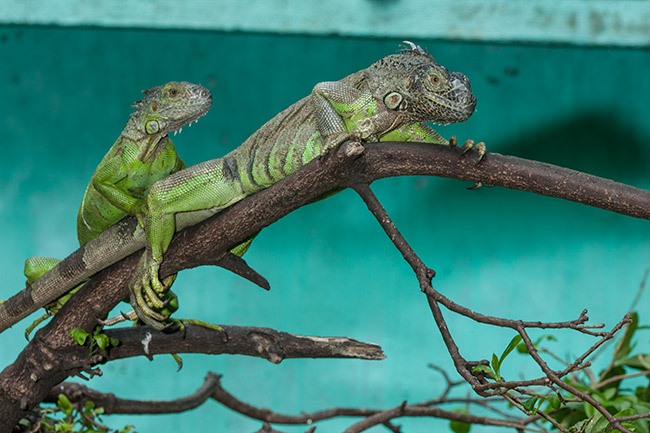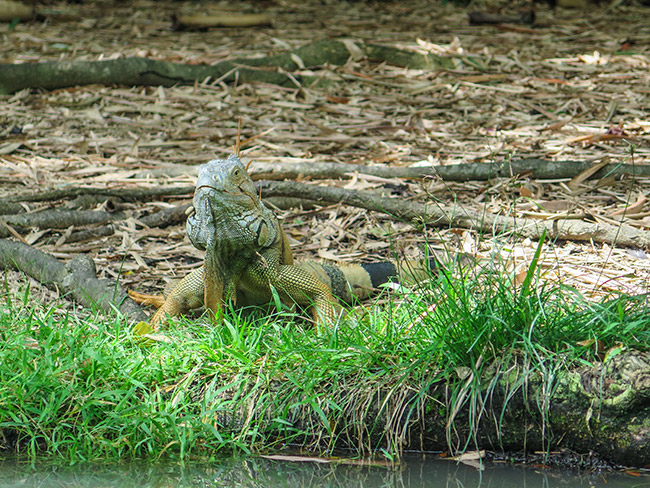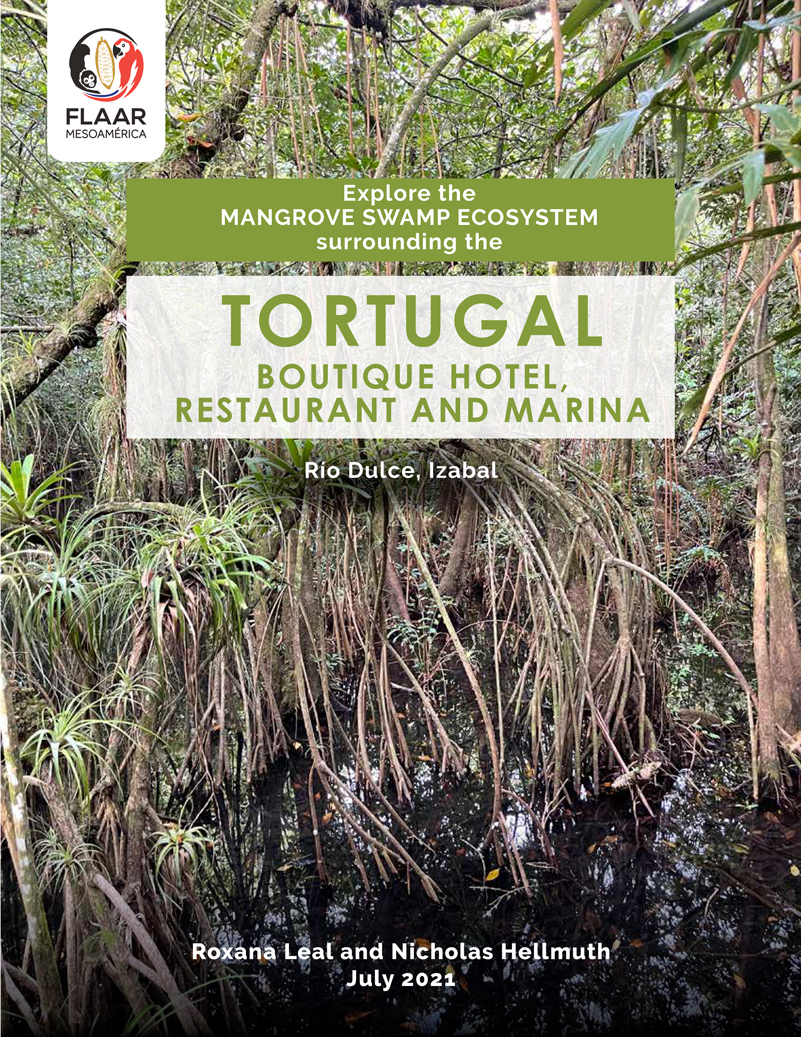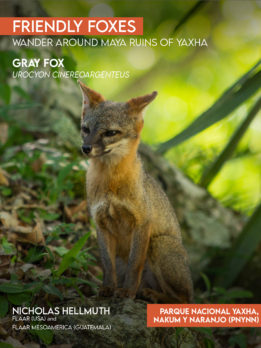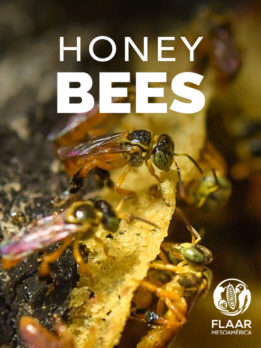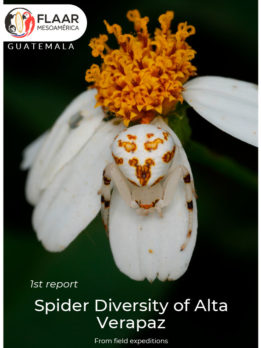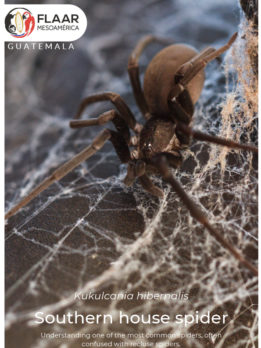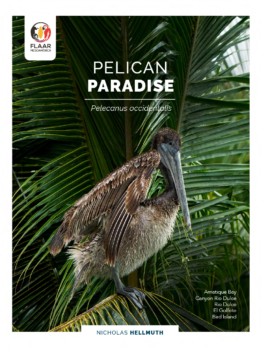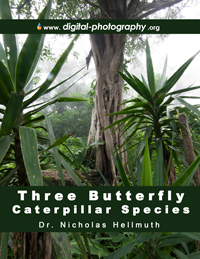Three Iguana species in Guatemala
Green iguana, Iguana iguana. The green iguana likes to live along the shores of rivers (Campbell 1999:146).
Black iguana, Ctenosaura similis. The black iguana is omnivorous, so is often considered a pest to the birds and animals whose eggs are eaten. Thus the FLAAR research project can correct the Wikipedia entry (read April 30, 2015) which erroneously states “…herbivorous lizards…” The black iguana eats meat so I would not consider it completely plant eating. But I will say that several of the photographs illustrating the generic iguana page are excellent; the photo from South Africa is outstanding (angle of the sun brings out all the aspects of the various sizes and shapes of the scales). Since Iguanas are native to the New World, I would assume the one photographed in South Africa was a pet or in a zoo.
On the top we have the Green iguana, Iguana iguana. And in the bottom you can find the Black iguana, Ctenosaura similis, in his habitat.
Both the black iguana and the green iguana are common at AutoSafari Chapin and all fincas and haciendas nearby.
Iguanas are a regular part of the diet of the Maya for thousands of years. Iguanas are still sold in markets. Selling and eating wild iguanas is probably illegal. But many iguanas are bred in licensed farms.
Posted April 30, 2015
After we found a badly injured baby green iguana on a finca. We brought the iguana to a veterinarian at AutoSafari Chapin who kindly and capably administered an injection with a syringe.
Iguanas are a regular part of the diet of the Maya for thousands of years. Iguanas are still sold in markets. Selling and eating wild iguanas is probably illegal. But many iguanas are bred in licensed farms.
Now, three days later, the iguana is free to wander around the protected garden where Sofia lives. We will continue to monitor its health, especially its ability to eat and drink. She is feeding it fruit and water.


